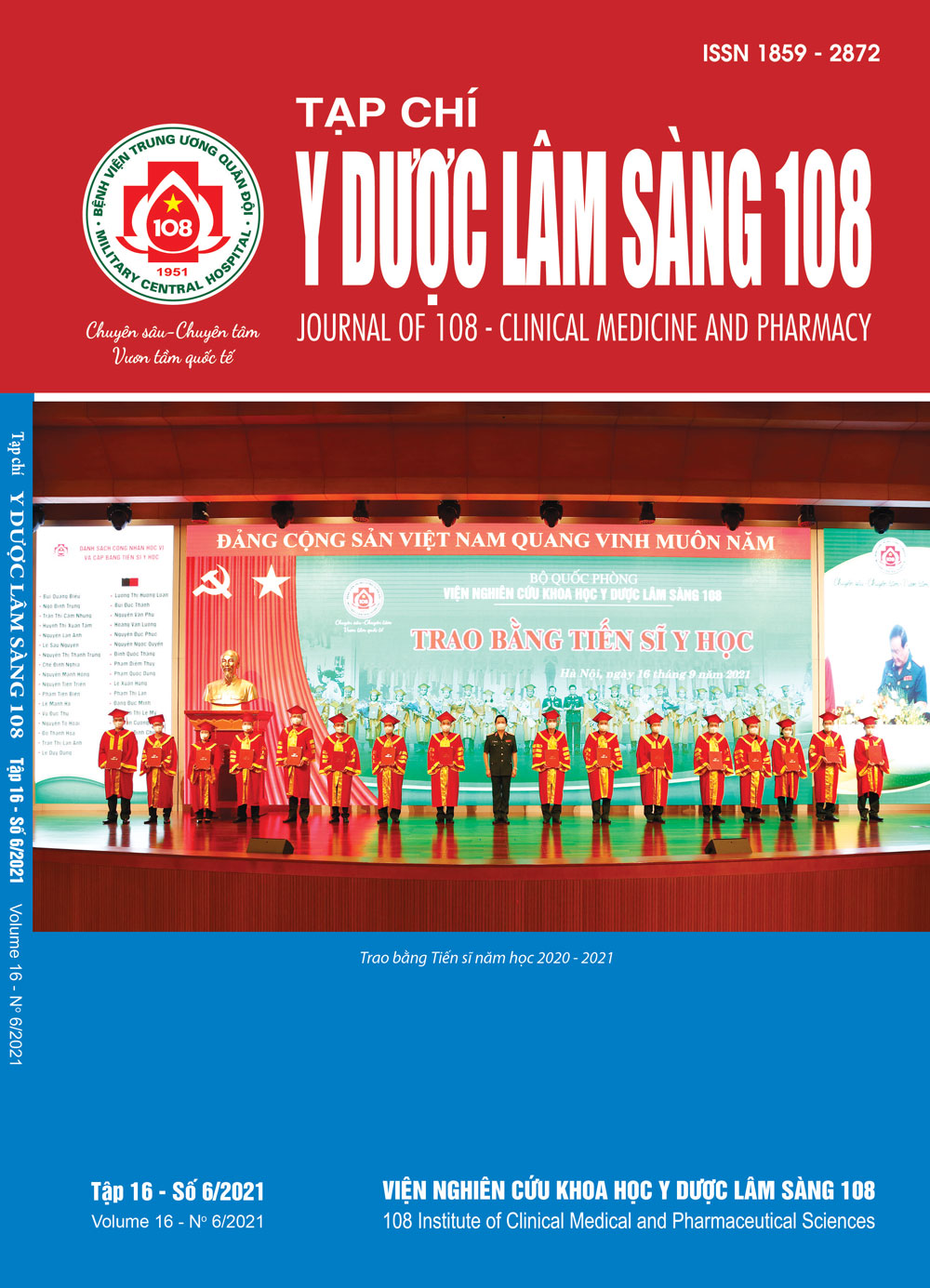Studying some charateristics and the effects of adipose-derived stem cells (ADSCs) on dermal fibroblast in vitro
Main Article Content
Keywords
Abstract
Objective: To describe some charateristics of Adipose-Derived Stem Cells (ADSCs) and to assess the effects of adipose-derived stem cells (ADSCs) on dermal fibroblasts responses via migration and proliferation in vitro. Subject and method: 10 samples of dermal fibroblasts and ADSCs were isolated from skin and adipose tissues of 10 healthy persons, who hospitalized at Plastic surgery Department, National Burn Hospital for plastic surgeries from June to December, 2020. We counted ADSCs after isolation and determined the morphological characterisation of ADSCs afer 72 hours, 7 days, 10 days of culture and chromosomes characterisation of ADSCs at the 5th passage. We also determined the effects of ADSCs on the proliferation and migration of dermal fibroblasts in vitro. Result: The average number of ADSCs after isolation was 2.63×106 ± 1.6×106 cells/1 gram of adipose tissue (min - max: 2.5 - 2.7×106) and the percentage of healthy ADSCS was 96.6 ± 1.5% (min - max: 96.2 - 97.5). After 72 hours of culture, ADSCs adhered to the surface of cell culture plate. After 7 days of culture, ADSCs spreading was promoted by coating the cell culture plate. After 10 days of culture, the proliferation of ADSCs occurred strongly, they coved more than 80% of the surface area of cell culture plate. The ADSCs still had normal chromosomal structure in the 5th passage. The proliferation and migration rate of dermal fibroblasts in the culture medium which supplemented with ADSCs -conditionned medium (ADSCs-CM) was higher than that in the control group. These rates were the highest when replacing 50% of the culture medium of dermal fibroblasts with ADSCs-CM. Conclusion: The ADSCS that we isolated had all the morphological characterisation of the stem cells and still retained the normal chromosomal structure in the 5th passage. In vitro, ADSCs stimulated the proliferation and migration of dermal fibroblasts.
Article Details
References
2. Zuk PA, Zhu M, Ashjian P et al (2002) Human adipose tissue is a source of multipotent stem cells. Mol Biol Cell 13: 4279-4295.
3. Jurgens WJ, Oedayrajsingh-Varma MJ, Helder MN et al (2008) Effect of tissue-harvesting site on yield of stem cells derived from adipose tissue: Implications for cell-based therapies. Cell Tissue Res 332: 415-426.
4. Meliga E, Strem BM, Duckers HJ et al (2007) Adipo-derived cells. Cell transplant 16(9): 963-970.
5. Gimble JM, Guilak F (2003) Adipose-derived adult stem cells: Isolation, characterization, and differentiation potential. Cytotherapy 5(5): 362-369.
6. Singer AJ, Clark RA (1999) Cutaneous wound healing. N. Engl. J. Med 341: 738-746.
7. Chen L, Tredget EE, PY Wu, Wu Y (2008) Paracrine factors of mesenchymal stem cells recruit macrophages and endothelial lineage cells and enhance wound healing. PLoS ONE 3: 1886.
8. Cooper DR, Wang C, Patel R, Trujillo A, Patel NA, Prather J et al (2018) Human adipose-derived stem cell conditioned media and exosomes containing malat1 promote human dermal fibroblast migration and ischemic wound healing. Adv Wound Care (New Rochelle) 7(9): 299-308.
 ISSN: 1859 - 2872
ISSN: 1859 - 2872
